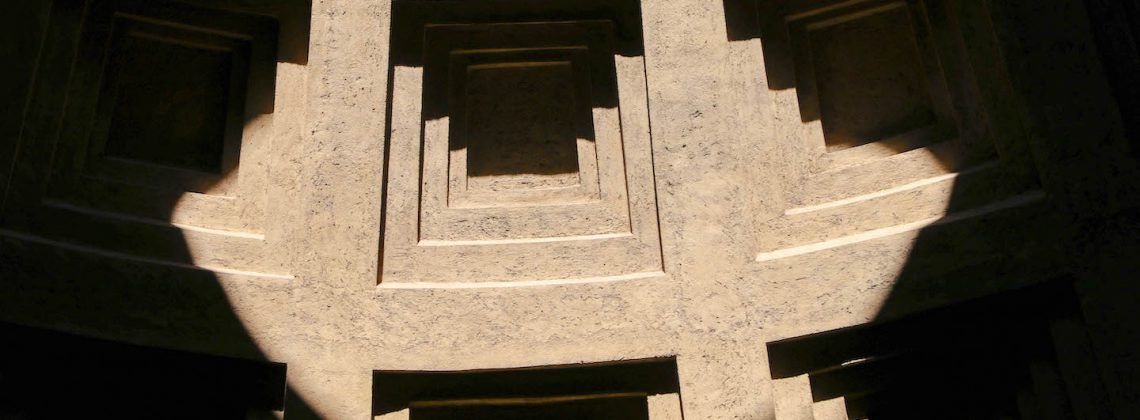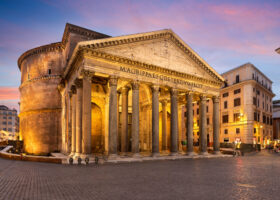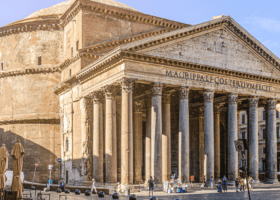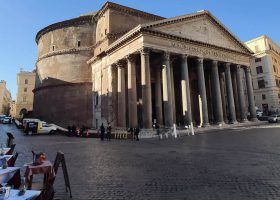There has always been speculation as to the actual purpose of the Pantheon. Was it a temple, a government structure, or simply a place for the Emperor to hang out with his friends? In this blog, we’ll answer in-depth this hotly debated question throughout the centuries.
Pro Tip: It’s easier to organize your trip when you have all your resources in one place. Create a browser folder and bookmark this post. Also, check out our guide to Rome for more planning resources, our top Rome tours for a memorable trip, and the top things to do near the Pantheon.
Editors Note: From July 3, 2023, a paid ticket will be required to visit the Pantheon in Rome. Tickets cost €5 for adults and free for children. At the time of writing, the tickets can only be purchased on-site but will be available online by the end of the year. (Updated 7 Jul 2023)
What Does “Pantheon” Mean
The name “Pantheon” refers to its dedication to the 12 Olympian gods. I would love to leave it at that and finish this article, but we all know there is much more.
Our first clue comes from a tradition happening during Hellenistic Greece. Hellenistic Greece is a period that explains the diffusion of Greece. It extends from the death of Alexander the Great ( 323 BC) until the birth of the Roman Empire ( 31 BC). Alexander introduced a large portion of the known world to Greek thought, literature, and customs. This is because, upon his death, his main generals, who were Macedonian, split up the empire. They promulgated the ways of Greece that they had all looked up to.
According to Filippo Coarelli, professor of Roman Antiquities at Perugia University, during the Hellenistic period, the name Pantheon had a very clear meaning. A temple dedicated to a deified king and other gods associated with him.
Not ready to book a tour? See if Rome tours are worth it.
The First Pantheon
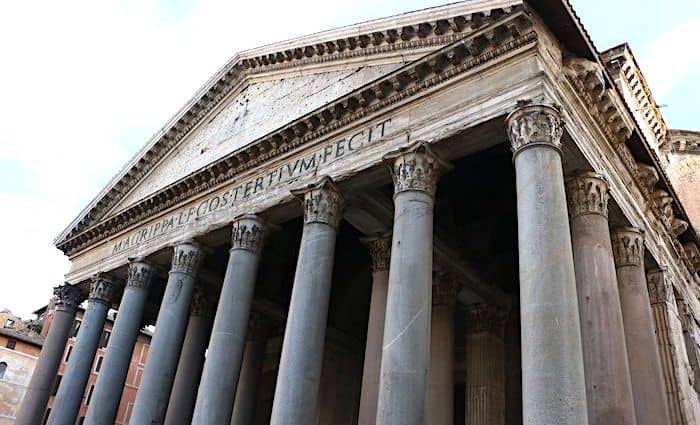
Rome Under Augustus
We must directly link the building to the builders and the time period themselves. Only in this way can we understand what it was used for. General Agrippa ( Augustus’ closest friend) built the Pantheon between 27 BC- 25 BC. He had been in charge of an overall rebuilding of this part of town. Consequently, the pantheon was included in this area.
Let’s first imagine what is happening in Rome at this time. Agrippa and Augustus are still riding the wave of their victory in the battle of Actium. This was the momentous defeat of Marc Antony and Cleopatra in 31 BC. After the victory, they tied up other loose ends around the empire over the next few years. Upon arriving in Rome in 29 BC, huge festivities took place. The doors of the temple of Janus were closed, signifying Rome wasn’t at war with anyone and the Pax Romana had begun.
After 80 years of the civil war of Romans killing Romans and trade coming to a halt, the world as the Romans knew it had been reborn. In real terms, the Roman Empire was born. Therefore it is with all of this happening that Agrippa is building the Pantheon. We can forgive him if his real intentions were to build a temple to deify Augustus while he was still alive.
A Living Dynasty
Coarelli surmises that all of the niches inside housed the statues of the many divinities as the name Pantheon refers to. However, he states that the original meaning was rather that of a dynastic temple of an Augusteum, for which there were similar examples throughout the Hellenistic world.
However, we know that Augustus was very cautious throughout his lifetime with certain terms such as king or Emperor. He would have impeded Agrippa from dedicating the temple directly to himself. The fact that the dynastic gods of his Giulio-Claudian family were present ( Mars, Venus, and also the God Julius for Julius Caesar) would have been sufficient in itself to demonstrate it.
On a side note, the statue of Venus was famous at the time for her earrings which they designed by cutting in half a pearl that Cleopatra didn’t swallow after betting Marc Antony that she could spend 10 million sesterces on one meal.
In the end, Augustus allowed a statue of himself and that of Agrippa on the outside of the temple in the porch area. You could say that this was a much more modest approach.
Popular Rome Tours
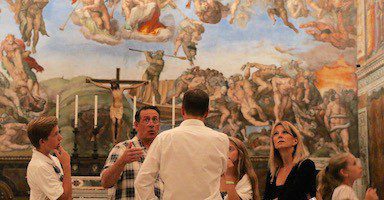
Best Seller
Privileged Entrance Vatican Tour with Sistine Chapel
This our most popular and longest-running Vatican tour to date. You’ll enter the Vatican Museums an hour before the public opening and see the breathtaking Sistine Chapel. Admissions are included and our English-speaking guides do a wonderful job bringing the museums to life!
See Prices
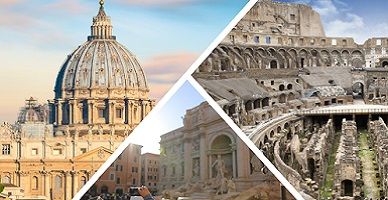
Customer Favorite
Rome in a Day Tour with Vatican, Sistine Chapel, Colosseum, and More!
Looking to get much of your sightseeing done in one day? This tour enters the Vatican an hour before opening and visits the Colosseum along with other sites like the Pantheon, Piazza Navona, and Trevi Fountain. All admissions and transportation are included as well as a licensed, English-speaking guide!
See Prices
Not ready to book a tour? Check out our best Rome tours to take and why.
After Augustus and Agrippa
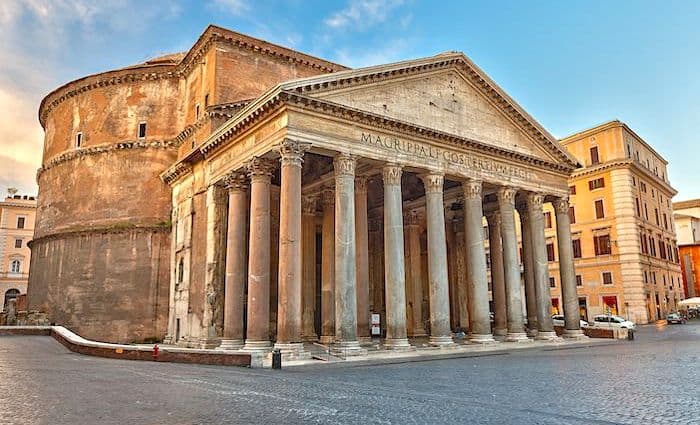
According to the Oxford Archeological Guide by Amanda Claridge, the Arval Brethren in 59 AD would meet here. The Arval Brethren was a college of 12 priests who made regular vows for the well-being of the imperial family. They would meet under the porch of the Pantheon instead of the porch of the Temple of Imperial Harmony in the Roman Forum.
This would seem to perpetuate the idea put together above. Basically, some 70 years after construction, the Pantheon was still a dynastic temple for the Julio-Claudian family. The Julio-Claudian dynasty would end with the death of Nero in 68 AD.
Hadrian’s Pantheon
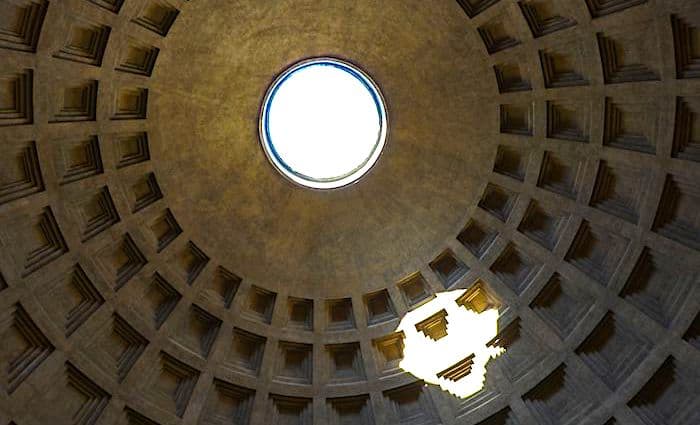
Hadrian the Man
Wait! You are probably thinking that I was going to discuss the 2nd reconstruction of the Pantheon under the emperor Domitian. Well, considering we don’t have any archeological ruins from this time, I will be leaving it out and jump right to the 3rd and final reconstruction.
Hadrian came to power at probably one of the most amazing times to be Emperor. He ruled from 117 AD to 138 AD. By now, the empire was at its biggest expansion ever after his predecessor ( and uncle)Trajan had annexed Dacia (modern-day Romania). He decided to stop the further expansion plans set out by Trajan and his Generals.
The generals thought this cowardly; however, all four of them were put to death by the Senate, who accused them of trying to usurp power. Hadrian claimed his innocence in the matter, but the idea was clear- you don’t oppose the emperor.
Hadrian was a wanderer who loved visiting the vast expanse of the Roman Empire. He set off in 121 AD to visit the empire and didn’t return until 5 years later. Will Durant wisely surmises that ” it is worthy of note that he left the capital for 5 years in the hands of his trusted subordinates and the government ran almost automatically”.
Hadrian the Builder
It is during this traveling that the third and final Pantheon that you can see today was built. As mentioned above, a fire destroyed the original building by Agrippa, and Domitian built another version of it in 80 AD. Supposedly lightning destroyed this 2nd building, and it was up to Hadrian to immortalize one of the most amazing buildings we can see today from antiquity.
Like with all the reconstruction done by Hadrian ( except the temple of Trajan), he left his own name off the building and had the original wording by Agrippa himself put on the facade. The way we look at the building today is extremely different from how it would have appeared to you if you were visiting it 2,000 years ago.
First of all, the Pantheon had a massive colonnaded portico that was much bigger than the current piazza. Also, the ground would have been at least 10 feet ( 3m) lower around the Pantheon, which means that the entire building would have looked much bigger and grandiose on the outside.
The ceiling of the porch was covered in bronze plate so thick that Pope Barberini, in the 17th century, was able to make 110 cannons for Castel Angelo, and there was enough left over for Bernini to build the Baldacchino in St. Peter’s church.
Oh yeah, he also built the biggest dome in the world and the largest span of unreinforced concrete the world has ever seen!
Subsequent Uses for the Pantheon
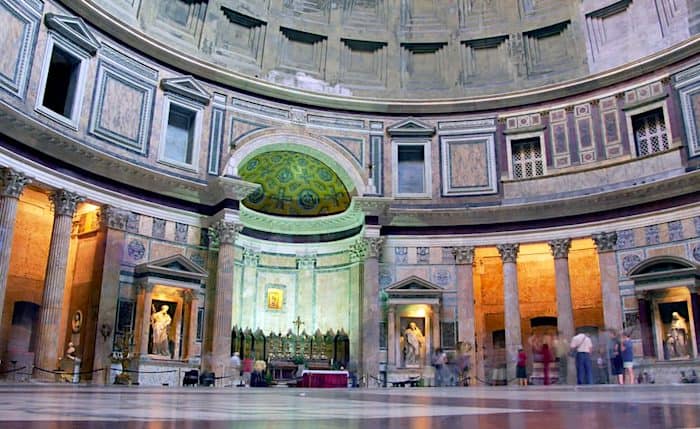
According to Claridge, the Pantheon was one of the places where the emperor Hadrian held court. He would sit upon a public tribunal and hear petitions and give judgments. We also hear of an imperial edict being read out in Pantheo in 368 or 370 AD.
So while the original building was used as a dynastic temple to the Julio-Claudian family, by the time of Hadrian, he was using it as a seat for certain government functions. However, imagine him sitting on a public tribunal inside of this massive dome. He must have made quite an impression!
In 609 AD, the Byzantine emperor Phocas gave to Pope Boniface IV the Pantheon, who turned it into a church- S. Maria ad Martyres. From this time in the middle ages to the present, the Pantheon has been allowed to survive and allow us to look at it in all its jaw-dropping splendor. In my opinion, it is only when you can see a building such as the Pantheon, that it allows you to understand how amazing the Ancient Roman Empire really was.
If you’re a history nerd like us, you’ll love our Rome in a Day tour, which explores the Pantheon and other top Rome sites. You could just read more about the Pantheon’s history, but nothing beats seeing it in person with a passionate local guide who loves history as much as you!
Not ready to book a tour? See if Rome Tours are worth it.
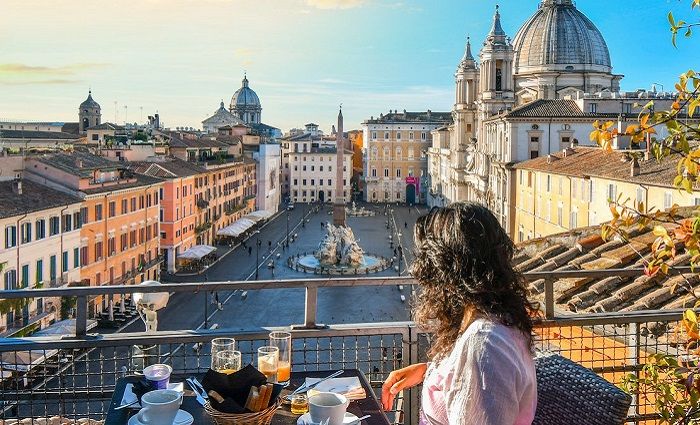
Where To Stay in Rome
Rome has a rich cultural history and many iconic landmarks to explore. Plan where to stay in the magnificent Eternal City in the best neighborhoods.

